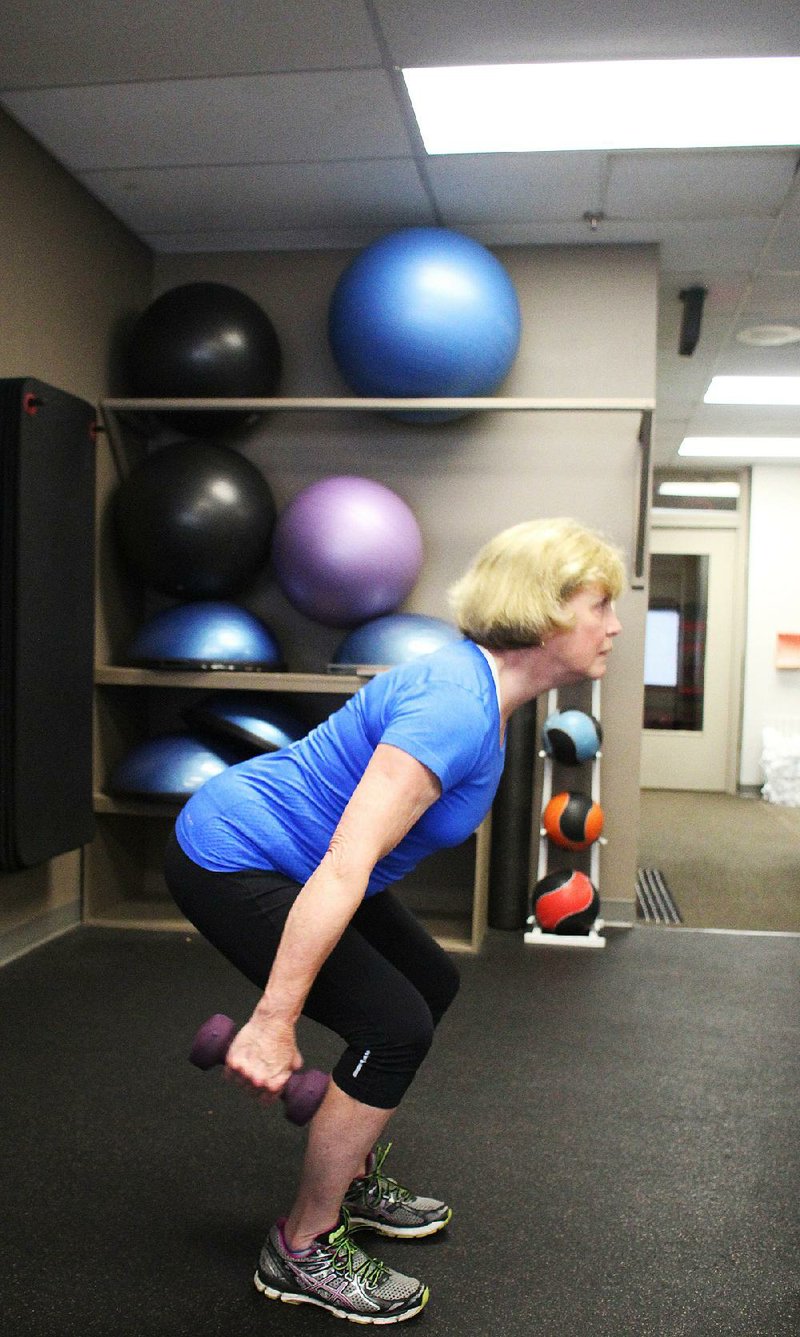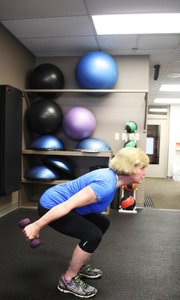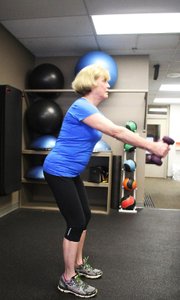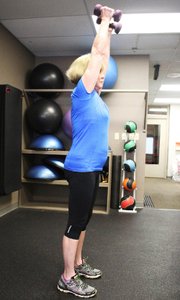Winter sports like skiing and snowboarding can be wonderful ways to remain physically active, spend time with family and enjoy the natural beauty of mountains. I have fond memories of loading up my miniature ski gear as a child and heading west with the folks in search of soft powder and challenging slopes.

This week, I'll present a few ways to prepare for your annual ski trip and will also introduce an exercise that makes a perfect addition to any preseason routine.
The Arkansas climate presents limited opportunities for the classic winter sports, so it's rare that someone will be "in shape" for participating in such activities. As a result, many people embark on ski adventures with great intentions only to realize that they are woefully unprepared to withstand the physical demands.
The good news is that a few weeks of training can make a significant difference in performance and soreness level.
For those who lead a physically active life, I'd recommend starting a "preseason" workout routine about a month before the trip. For those who don't, two months is a safer bet.
In either case, the program should start with cardiovascular training on most, if not all days of the week. Twenty minutes of cardiovascular exercise performed at 75 percent to 85 percent of your maximum heart rate is plenty. To estimate this heart rate zone, simply subtract your age from 220 and then multiply by 0.75 and 0.85, respectively.
The next step is to work on isometric and dynamic leg strength. Skiing, snowshoeing and snowboarding all require constant leg work, which can create uncomfortable soreness without adequate preparation. On a three- or four-day trip, this can translate into spending the last 48 hours in the lodge.
Strengthening the legs should begin with common exercises like squats, leg press and lunges. I recommend maintaining higher repetition ranges (12 to 15) and at first do two sets. For this program, I also recommend reducing the rest period between sets to less than 30 seconds. Muscular endurance is really the critical element we want to develop, as opposed to muscular strength.
In addition to the traditional lower-body strength work, it's important to address flexibility. Stretching the quadriceps and hamstrings will help reduce the risk for knee injury and also prepare these muscles for action. Remember to hold each stretch for 20 to 30 seconds and to the point of discomfort, but not pain.
This week's exercise mimics the skiing motion by using your body weight and a pair of light dumbbells as resistance. The Dumbbell Skier Swing is appropriate for all fitness levels and is easy to do almost anywhere.
1. Select a pair of medium-weight dumbbells and stand with your feet shoulder-width apart.
2. Squat down slightly by pressing your hips back and bending the knees. As you do this, allow both arms to swing back while keeping them fully extended.
3. Quickly stand back up and allow the arms to swing forward.
4. Go right back into a shallow squat and swing the arms backward.
5. Continue performing this "skier swing" with short, shallow squats that will get the heart pumping.
6. Perform two sets of 25.
This exercise is a great partner to traditional strength training for a ski-trip preparation program. The short, quick squatting movements are very similar to what one experiences during downhill skiing and should cut down on the amount of soreness during the trip.
Remember, many of the ski runs may last 30 to 60 seconds, so it's important to work your way up to performing this exercise the same amount of time. Enjoy!
Matt Parrott has a doctorate in education (sport studies) and a master's in kinesiology and is certified by the American College of Sports Medicine.
vballtop@aol.com
ActiveStyle on 11/30/2015



